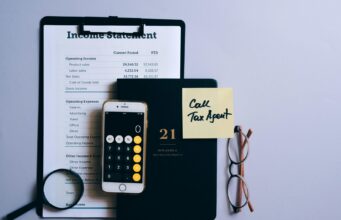
As a general rule of thumb you’ll want 25x your annual spending to call yourself financially independent. Instead of debating this rule since people like to argue on the internet, we’ll use it as a basis for the post. Having 25x annual living expenses doesn’t say much about how the person lives. But. Knowing the monthly net income definitely gives us a lot of ideas on how a person can spend his free time. In here we’ll cover the USA and give a few ways to compare this to other countries as well.
Lifestyle Benefits By Income
Bare Minimum – $4,000 a Month: We’re not interested in the frugality crowd. Their lifestyles are not attractive (double entendre). As a single person, it takes a bare minimum of $4,000 a month to live a decent life without coupon clipping. Remember, this is in the USA and does not include major cities like New York, San Francisco or Los Angeles where this is no longer enough to get by (many of these cities require ~$2,500-3,000 for a simple one-bedroom apartment). Luckily, no one needs to live in the most expensive cities and $4,000 a month is enough to live in a lot of good areas. You’ll be single and have all of your basics covered.
Breakdown: Essentially, you’ll afford a basic apartment ~$1,500 a month, $500 will cover your regular bills such as a cell phone, utilities and gym membership, $1,000 goes to food and the last $1,000 is for fun and random expenses/buffer. This is not an exciting life. The good news is that you don’t have to worry about putting food on the table and you no longer have to “take it on the chin” because you can quit whenever you like. While everyone has a different level for independence since it’s simply 25x annual spending, this is a good idea of what the bare minimum looks like. (Roughly $1.2 million assuming you never work again)
Normal/Solid – $6,500 a Month: At this level we’d say it’s near impossible to say the person is not financially independent. Assuming you’re a single person, your life is now comfortable. If you live in an expensive city, it isn’t amazing. But. You can always move. Your lifestyle will allow you to take care of everything you need including vacation. It allows you to take care of your health. Your free time is now valuable and you have flexibility.
Breakdown: The same items as the bare minimum but you now have $2,500 a month extra. This is a meaningful amount of money since it is 62.5% higher than the monthly spending you used to have. This allows you to choose how you maximize your utility. If someone prefers to live near the beach, they can pay up and live there. If they prefer going out more… They can do that. If they prefer buying a one time item per year ($30,000) they can also do that! There is a lot of wiggle room. The downside here is that it is not safe to buy anything extravagant (expensive home with high maintenance costs, sports cars, etc.). (Roughly $2 million assuming you never work again)
Living the Good Life – $10,000 a Month: At this point you see a lot of opportunity. You’re able to spend and avoid looking at your accounts since they are being replenished. Fast. This equates to ~$329 per day in spending. Unless you want to go out 5-7 days a week it’s going to be near impossible to burn through this money. The only way you’re going to do it is if you have an expensive recurring cost: home/sports car. In fact, you can afford one of those things assuming you don’t go out and spend a large amount of money consistently.
Breakdown: Unlike the flexible lifestyle prior to this, you’re living a “carefree” lifestyle. Again this is a little bit less so in high cost cities. But. It’s still achievable in high cost cities assuming you have good social skills. At this range, many people have a hard time seeing a reason to generate more money. If you can spend $10,000 a month forever, there isn’t much you’re missing out on. You can still fly business class if you feel like. A few small changes and you get what you like. The only downside here is having a family could ruin the math. A typical $10K/month budget breaks down as follows: 1) nice apartment in an area you like $3.5-4K, 2) $2,000 food, utilities, gym etc. and 3) $4.0-4.5K a month for drinks, going on dates, events (sports/concerts), travel etc. with $4,000+ in disposable income for fun alone, it’s difficult to run out of things to do. You could add in extreme sports, learning a musical instrument, dance and hundreds of other activities. To cap this all off, if you want a single luxury item you could do that as well (in exchange for some disposable income). This would be a high end apartment or a sports car. (Roughly $3 million assuming you never work again)
Unquestionably Set – $20,000 a Month: A common number thrown around for single people is “$500K/year”. After taxes this is around $25K/month. We’d say you can go to $20K and won’t see much of a difference. It takes a ton of spending to even attempt to burn through $20K/month consistently. On a one off (yes it is easy) on a consistent basis… Not so much. You’re essentially pushed into “luxury”. This means the only way you can consistently spend $20,000 a month is by going luxury with either a residence or “toys” (sports cars etc.). Unless you suffer from a drug addiction it is next to impossible to blow through this money!
Breakdown: Essentially you have everything you want. The only items that are out of the picture are jet setting and *multiple* material obsessions. If you’re interested in having multiple sports cars, a private driver, a private cook and a mansion… That’s the only way you’re going to burn this type of money. You could easily live in a luxury apartment, drive a sports car and go out 3 days a week and be fine! Hard to argue that this is a “bad life”. It’s an amazing life and we hope everyone can experience this type of living for at least 5 years. (Roughly $6 million assuming you never work again)
Adjusting for Cities
We’ve given four basic tiers for “financial independence”. The key here is adjusting these numbers based on how one lives. If you’re concerned about “running out of money” you’d simply make one of these adjustments. Also. If you’re looking to maximize the money, you can also move to one of these areas. We’ll start with the hardest and work down.
Tier One Cities: While everyone knows our view on San Francisco, it is by far one of the most expensive cities in the world. We would say it isn’t a “tier one city” from an opinion standpoint. That said, we’ll refer to “Tier One” as expensive places. Tier One Cities Would Include: New York, Miami, San Francisco, Los Angeles, “Silicon Valley”, Tokyo, Seoul, Zurich, Hong Kong, Singapore, Paris and a few more. Essentially, if it’s a top 5 most expensive city in a western country… It’s probably a Tier One. We’ve got bad news here. If someone wants to live in one of these cities we would say the levels of financial independence are adjusted down. Meaning ~$6,500/month would be needed to feel financially set in a tier one city. The good news is if you’re not interested in living in any of these cities, you can leave since that $6,500 is location independent.
Tier Two Cities: This is where things get much more reasonable. You look for the next tier down within a specific state or region and you’ll find livable cities that don’t drain your bank account. These places include: Las Vegas, Fort Lauderdale, Houston/Dallas, Philadelphia, etc. These cities are solid but they don’t kill the bank account (a good thing). Another way to identify a tier 2 city is find a place where people are migrating to today. Many people are leaving expensive cities for more reasonably priced areas and we see that with the list of cities in this paragraph. This is essentially the benchmark we used for the four tiers of Financial Independence.
Add 25-33% Areas (Relative to Tier 2 Cities): These cities are generally in Eastern Europe and Latin America. While people believe they can live like kings on “half” this is not true. Anyone with experience will tell you the same thing. You’re forced to live in the nicest areas. You don’t want to live in the mediocre neighborhoods. For high quality food and a high quality standard of living, you’re pushed into the nicer areas. As an additional note, you won’t be the only guy who came up with this idea. There will be a few foreigners living there with a heavy wallet as well. This leads to a total reduction in cost of about 25-33% for a similar lifestyle in the USA. Simply speaking, take the numbers you see above (the four levels) and add 33%. This will give you an idea of where you stand. If you’re at ~$7,500 a month, this will “feel” like $10,000+ per month in these cities. The natural downside is living abroad but we won’t argue about that part since it is a personal choice.
Add 40-50% Areas (Relative to Tier 2 Cities): This is where the backpackers usually go: South East Asia. At the time of this writing you can add 50% without blinking. Areas like Thailand are significantly cheaper and have a different geopolitical tradeoff. The upside is that the region is livable for the right person with the right personality (nope, not us). Unfortunately, we have not visited Africa and several other parts of the world so we can’t decide if they would fall in this category. So we keep it simple with South East Asia.
Important Conclusion: As an example, if you are currently in the $6,500 a month camp and go through a recession, there is no reason to panic. Even if your cash flow drops to $4,000 a month… You can reduce your spending and stay. Or. You could move to a lower cost region and arbitrage the exchange rates. The ability to move to a different city is an important swing factor unless you’re dead set on living in one city alone (Hint: we will guess that you end up living in two cities instead of one).
Making This All Seem Reasonable
It is unlikely that anyone agrees with this post so far. Since numbers move around so much based on the individual. That said… lets add another wrinkle into the story. If the numbers don’t seem achievable we have to ask “how to set it up” so that it is achievable. The main assumption we’ve made so far is that you have $0 in active income (Explanation of Passive and Semi-Passive Income). The second assumption we’ve made is that you live forever and don’t touch principal. These are two BIG assumptions. By making a small change to either the numbers get easy (fast).
Active Income: We don’t consider online income as passive. Even if you work 2-4 hours a week, that is still 2-4 hours a week. Now if you can do this and generate $3,000-5,000 a month… maybe it really is worth it. 2-4 hours is not much time and it can push you from one category into the next (except the $10,000 to $20,000 move). We focus a ton on online income since it doesn’t hurt your freedom. Unlike every other form of income, you can do it from anywhere in the world. This concept typically hurts the cubicle crowd since they cannot imagine being able to earn the same amount of money regardless of where they live and travel to.
Assuming you’re in this boat, you’ve suddenly moved your monthly spending from $6,500 to $10,000+ and have room to save additional money as well. The other important item is the time frame. Continuing to work from age 30-50 is not a big deal. In fact, as we alluded to in a separate post we think a healthy amount of work per week is 15-25 hours.
Touching Principal: Unless you have a desperate need to leave all your money to charity there is no real reason to die with a boatload of cash. In fact, you want to die with $0 ideally. This is unreasonable but if we look at the expected life span we can see that going negative isn’t a big deal if you have a long time frame. If you’re spending $10,000 a month (using round numbers) but turn 65 this year… It’s probably best to ratchet it up. The chances of living to 100 are slim and if you begin spending closer to $11,000-12,000 a month it is unlikely that you run out of money. The risk averse crowd will say it’s not worth it. But. The numbers don’t lie and the chances you burn out of money before dying (typical age is in the 80s) is unlikely. Besides, 25 + 65 = 90. Way above the average age and also assumes you have zero investment returns for 25 straight years.
Putting All of This Together in an Example: Lets say you’re in the $10,000 per month camp. You’ve been at this same level for a while and turn 60. Well in this case you can let all your worries go away. Why? Well you can lock in in ~2% with no risk (money markets are already at 1.4% so feel free to run it with the exact if you like). We make a basic assumption that anyone reading this blog will not live past 90. This is highly unlikely and represents low single digits of the population (women live longer than men, smaller bodies and frames require less burden on cardiovascular system). Put this all together and you’ll see that you can spend the exact same amount of money for 35 straight years assuming returns are terribly low and stuck at 2%… forever. This also assumes you never change your location.
Important Conclusions
Putting all of these concepts together we would say the best way to feel comfortable financially is to “make it” in a big Tier 1 city first. There are many reasons for this: 1) if you make it financially in a Tier 1 city, any alternative city you choose will decrease your cost of living, 2) if you make it in a big city, you’ve successfully avoided playing the game of keeping up with your neighbors (trying to win the “money game” in any tier 1 city is crazy), 3) travelling is necessary to build a few escape options, all you need is one or two cities you like that are not tier 1, this allows you to have flexibility, 4) active income is likely a part of your life forever, you may quit for a couple of years but it is unlikely to continue for more than a year or two, instead you’ll do something lower key at minimum to occupy around 20/hours per week or less, 5) we consider a person as set when they never have to touch their principal, this hasn’t changed. But. If someone gets over the age of 60 or so… it becomes less important since no one lives forever!, 6) as a quick note, since the financial independence numbers are based on tier 2 cities, a general rule of thumb from the “rich” is that $500K/year pre-tax income is needed to feel set for life in a tier 1 city this is around $25K a month or 25% higher than the numbers in this post. For entertainment purposes we’re running a poll on twitter to see how *little* people need to feel financially set.
















